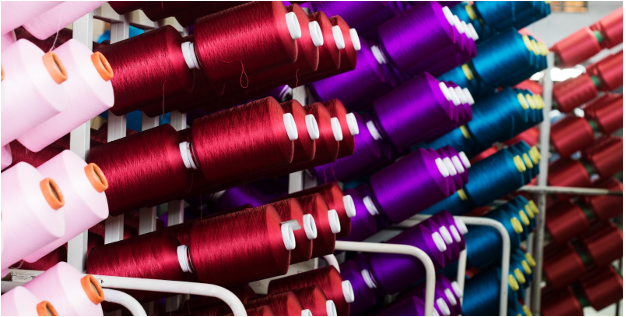Have you ever completed a sewing project only to discover the seams unraveling after just a few uses? If so, you’re not alone. One of the most crucial aspects of a successful sewing project is selecting the right thread—an often-overlooked detail that can mean the difference between a lasting creation and a disappointing result.
Whether you’re working on delicate embroidery or heavy-duty applications like fishing nets or safety harnesses, the right thread ensures durability, functionality, and aesthetic appeal. Let’s dive into the essentials of selecting the perfect thread for your sewing needs.
Understanding Sewing Thread Basics
Sewing thread is a specialized type of yarn, designed for strength and performance. It’s created by twisting multiple yarn strands together, making it much stronger than ordinary yarn. Common materials used for sewing thread include:
- Cotton: Ideal for natural fabrics.
- Polyester: Known for its strength and durability.
- Rayon: Perfect for decorative stitching.
- Nylon: Suitable for heavy-duty projects like fishing nets.
- Silk: A premium choice for delicate fabrics.
Key properties to consider include:
- Tensile strength: The amount of stress the thread can endure before breaking.
- Elasticity: How well the thread recovers after stretching.
- Consistency: Even thickness, as irregularities can cause jams or breakage.
For instance, safety harnesses require threads with exceptional tensile strength, while decorative projects prioritize appearance, such as shine and color matching. Proper storage also plays a significant role in maintaining thread quality. Keeping threads in a cool, dry place away from sunlight ensures longevity and optimal performance.
Choosing the Right Thread for Your Project
While all-purpose thread covers about 90% of basic sewing needs, specific projects require more tailored solutions. Consider these examples:
- Upholstery projects: Heavy-duty upholstery thread.
- Delicate fabrics: Extra-fine thread.
- Denim work: Specialized jean thread.
- Decorative pieces: Rayon or metallic thread.
- Quilting: 100% cotton thread.
A valuable lesson is to prioritize quality over cost. In the past, choosing inexpensive threads resulted in frequent breakage and machine lint buildup. Premium brands like Coats & Clark, Mettler, and Gutermann now ensure smoother and more durable projects.
Matching thread weight to fabric is also crucial. Lighter fabrics require finer threads with higher weight numbers, while heavier materials need stronger, thicker threads with lower weight numbers. This simple adjustment greatly enhances a project’s durability and finish.
For outdoor projects exposed to sunlight, UV-resistant threads are essential to prevent premature wear and tear.
Common Mistakes in Thread Selection
Years of teaching sewing classes have revealed several common thread-related mistakes that crafters make. Avoiding these can save you time and frustration:
- Mixing thread types or weights between the bobbin and top thread, which causes tension issues.
- Opting for low-quality threads to save money, leading to shredding, breakage, and tension problems.
- Improper thread storage, which can cause deterioration from sunlight, humidity, or dust.
- Neglecting machine maintenance, such as cleaning lint buildup in the bobbin case.
One of the most frequent issues encountered is the use of mismatched thread types between the top thread and bobbin, resulting in tension imbalances and unsightly knots on the fabric’s underside.
Regular machine cleaning is also essential. Using a brush to clear thread lint after major projects prevents buildup in the bobbin case and maintains smooth operation. Avoid using compressed air, as it can push debris further into the machine.
Also Read: What are Viscose Yarn and Uses?
Conclusion
Thread selection may seem like a minor detail, but it is fundamental to the quality, longevity, and success of sewing projects. By understanding thread basics, matching threads to project requirements, and avoiding common mistakes, consistent results can be achieved.
Beyond color matching, consider factors like material properties, thread weight, and durability. Investing in premium threads and storing them properly will save time and frustration. Whether working with delicate silks or heavy-duty upholstery, the right thread ensures that creations not only look beautiful but also stand the test of time.




